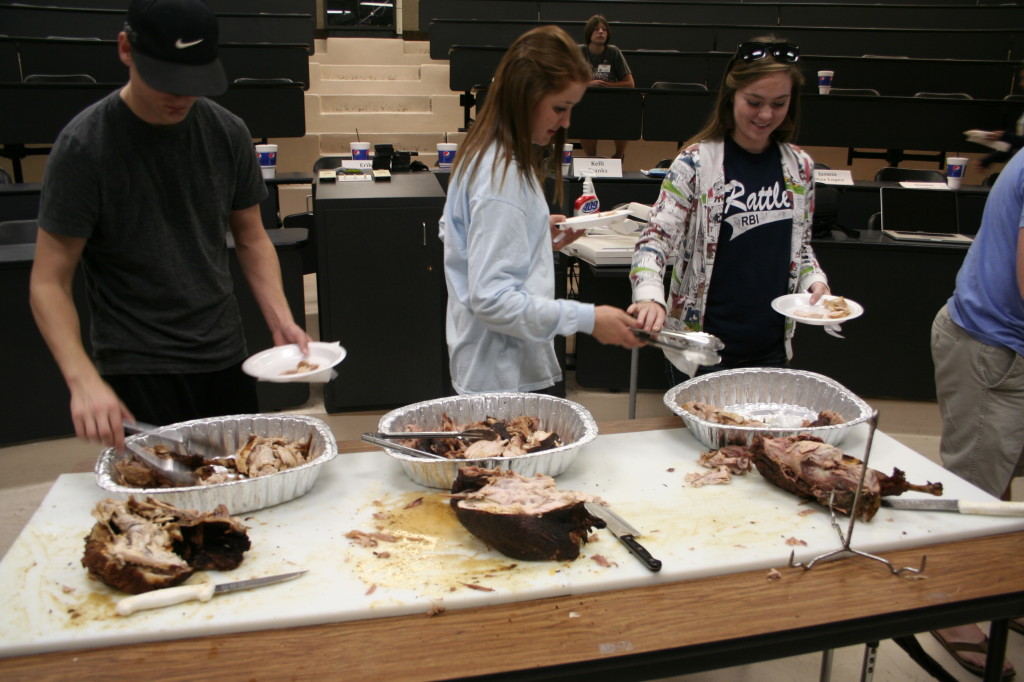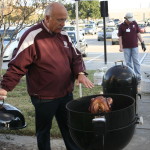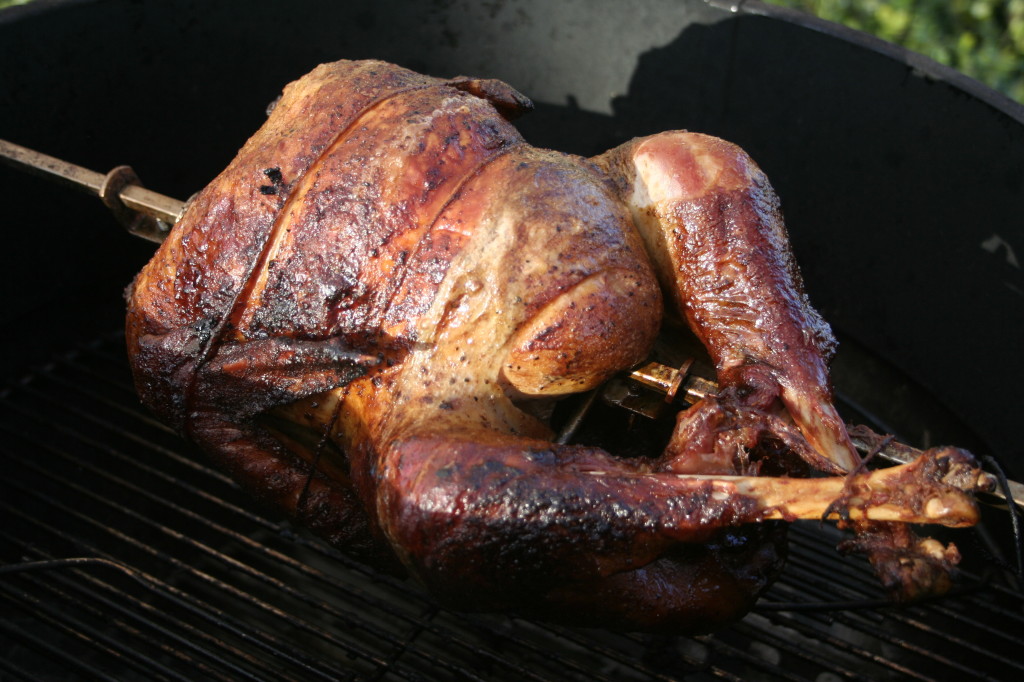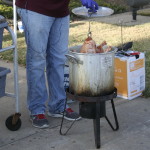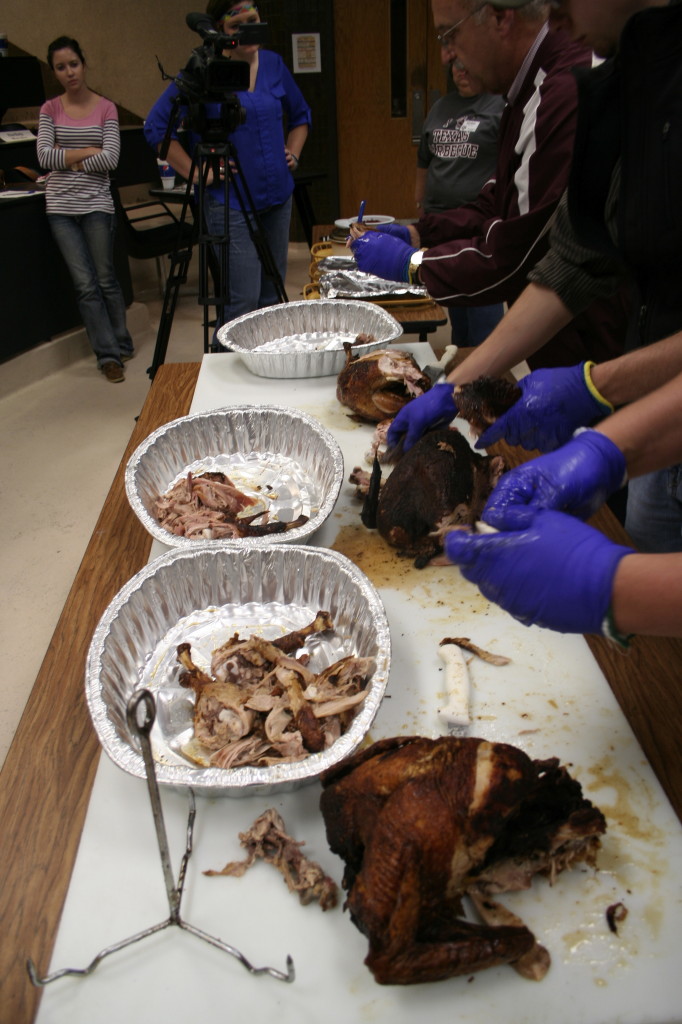In Texas Barbecue, one of our lectures is on three methods of preparing Turkeys: by smoking, by rotisserie, and by frying. We have this lecture leading up to Thanksgiving so that the students can learn something about these methods of preparation and can share these with their families during the holidays.
We purchased four turkeys around the 10-pound range. The turkeys were frozen when we purchased them, and we placed them in a refrigerated cooler for about four days to allow them to thaw. All four were brined overnight and a commercial poultry seasoning was applied before cooking.
- Jeff Savell discussing smoked turkey
- Savell discussing rotisserie-cooked turkey
- Savell discussing Tyler’s turkey frying methods
We used the Weber Smokey Mountain Cooker to smoke one of the turkeys. A charcoal fire was lit in a Weber Chimney Starter, and after adding the lit charcoal to the smoker, hickory chunks were added for the smoke.
We used the Weber Kettle Rotisserie attachment on top of a Weber Grill for the rotisserie-prepared turkey. The turkey was placed on the spit and the legs and wings were secured with butcher twine. We used indirect heat on the grill using charcoal, and hickory chunks were used as the source of smoke.
Frying turkeys is an art to itself and may not really fit under the barbecue umbrella. However, it is a popular method of preparation in many areas of the South, especially in Louisiana, and many people once they begin cooking turkeys this way, do not go back to the traditional oven-prepared turkeys.
- Tyler removing turkey from plastic lug
- Tyler slowly lowering turkey into frying oil
- Tyler waiting for the frying oil to stabilize before putting turkey all the way in the oil
We used an aluminum pot over a propane burner. Four gallons of peanut oil were brought up to 350°F before the turkeys were fried in the oil. The guidelines for frying turkeys usually calls for about 3 minutes per pound, but we tell the students that it is important to use a thermometer to check for doneness rather than a timed method. We also stressed safety in frying turkeys including making sure the turkey is completely thawed and the surface is relatively dried before placing in the frying, lowering the turkey very slowly into the fryer, having the fryer far away from structures because of the danger of fires, and not to overfill the pot with oil that may flow or bubble over and catch on fire.
We fried two turkeys, one before class and the other during class so that the students could see the entire process. All turkeys were cooked to an internal temperature of 165°F in the breast, and when the turkeys had achieved this endpoint temperature, they were removed from the various smokers, grills, and pots and were rested about 15 minutes or so before carving.
The students enjoyed all three turkeys: juiciness and tenderness was cited as a reason for liking the fried turkeys, flavor and tenderness for the rotisserie-cooked turkey, and flavor for the smoked turkey. All of the turkeys were juicy with brining and not over-cooking as the primary reasons for this.
One of the side dishes Jackie prepared for this class was Cranberry-Jalapeño Salsa, a recipe from Southern Living. This was a great addition to the turkey and could be used for pork dishes, too.

